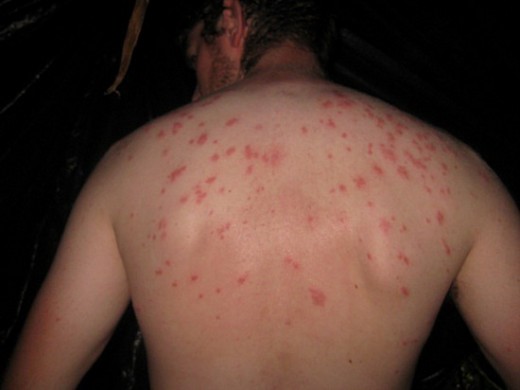Typhoid fever is an infection caused by the Salmonella typhi or Salmonella paratyphi bacteria. Observing the typical pattern of typhoid fever symptoms helps doctors diagnose and treat typhoid better.

Typhoid Fever Symptoms
Typhoid symptoms vary widely and are very much similar to the symptoms of other microbial infections. Here are some of the common typhoid fever symptoms.
- Variable degrees of high grade fever in about 75% of cases
- Muscle pains and body aches
- Chills
- Decreased appetite
- Headaches
- Nose bleeds
- Pain in the abdomen in 20 to 40 % of cases
- Dizziness
- Rose spots (rashes) over the skin
- Weakness and fatigue
- Neurological symptoms resulting in altered behaviour
- Constipation or diarrhoea
- A sore throat and a cough
Typical Patterns Of Typhoid Fever Symptoms
It may take anywhere between 3 and 21 days for typhoid symptoms to appear after the entry of the Salmonella bacteria into a person’s body. This duration is called the incubation period.
In patients who are not undergoing any form of typhoid fever treatment, there is a specific pattern of symptoms, which can be classified into 4 phases. Each phase lasts for about a week.
Here are the four phases mentioned above. It is important to note that symptoms refer to the effects experienced by the patient, while signs refer to the doctor’s findings noted after his clinical observation of the patient.
The First Phase
Symptoms During The First Phase
- Fluctuating fever, with a gradual rise in body temperature
- Body aches
- Headaches
- Weakness
Signs During The First Phase
- Leukopenia – A decrease in the count of white blood cells
- Relative lymphocytosis – A relative rise in the number of lymphocytes in the blood (lymphocytes are a type of white blood cells)
During the first phase, a blood sample taken from the subject is put over a culture medium that favors the growth of bacteria. This sample is then subjected to microscopic examination to detect and confirm the presence of the Salmonella typhi bacteria.
The Second Phase
Symptoms During The Second Phase
- Spikes of fever – The fever levels may go as high as 103°F to 104° F, usually in the afternoons
- Diarrhea – Patients of typhoid may report up to around 6 to 8 rounds of stool discharge within a day. Stools are marked by a typical peanut-soup-like smell
- Constipation, in some cases
- Nervous fever – A state of confusion and nervousness
Signs During The Second Phase
- Bradycardia (A decrease in the pulse rate) – It is called relative bradycardia when it relates to typhoid. Unlike the fevers brought on by other infections, the fever brought on by typhoid shows a mismatch between the rise in the pulse rate and the rise in the body temperature. For this reason, it is referred to as relative bradycardia
- Rose spots over the skin – In about one-third of typhoid cases, rose-colored spots may appear on the abdomen and the lower part of the chest
- Rhonchi – Rhonchi are coarse, rattling sounds that arise from secretions in the respiratory airways and they can be heard through a stethoscope
- Borborygmi – These are sounds are produced in the body due to the movements of air and fluids in the intestines
- Hepatosplenomegaly – Enlargement of the liver and the spleen
The Third Phase
It is during this phase that the patient is prone to various dangerous complications like:
- Intestinal bleeding
- The perforation of the intestine – The last segment of the small intestine is the usual site of perforation. It results in the spillage of the intestinal contents into the abdomen. This may cause the spread of various toxins in the bloodstream, resulting in a fatal condition known as septicemia
- Spread of the infection – The discharge of infective foci to other organs like the gall bladder, heart, and the bones may cause infection in them as well (these infections are known as cholecystitis, endocarditis, and osteitis respectively)

The Fourth Phase
This phase occurs during the fourth or fifth week of the infection. During this phase, the fever may subside. If it still continues in the form of high spikes, dehydration may occur.
If typhoid fever symptoms are observed early, the diagnosis and treatment of the infection can be done in a timely manner, with the right antibiotics. A simple typhoid test can help in identifying the disease. If left untreated, the infection can cause various complications, some of which may even require surgical intervention. So, the next best thing to preventing typhoid is to seek immediate clinical treatment for the infection.